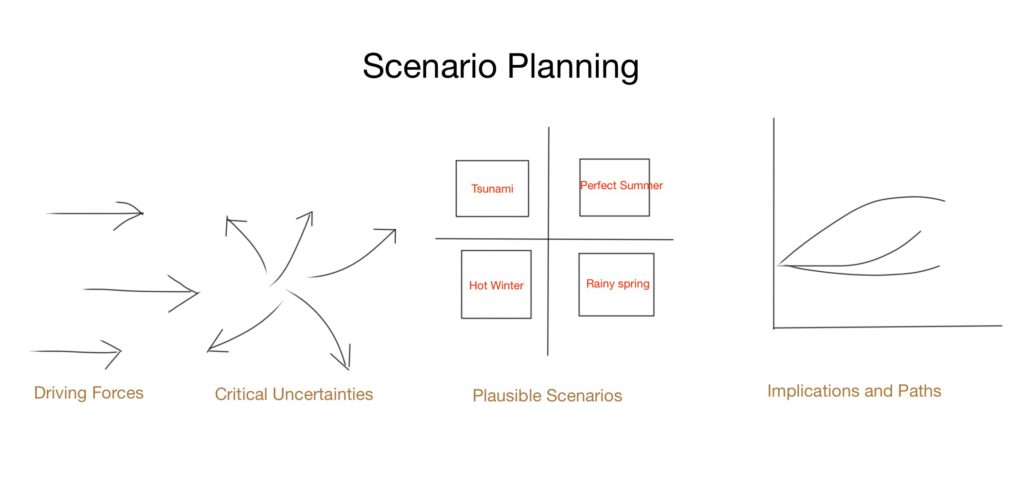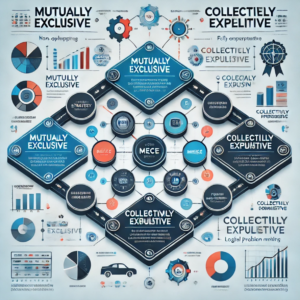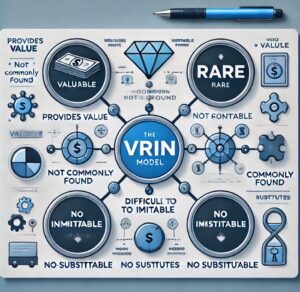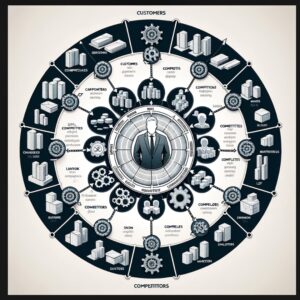Scenario Planning

Used by Senior Management to get a sense of their judgements in response to specific situations.
How it is different from long range planning ? Scenarios are structured with cause-effect relationships. Scenarios move the firm to middle of analysis and variables in the environment strategic to the firm are shortlisted. Interactions between the firm and the scenario are modelled over several time periods. Alternate futures or Scenarios can be developed.
Each scenario is story-specific pattern of strategic judgement and distributing it helps decision makers locate and align their judgment contributions.
Scenario Planning is a strategic planning method used to make flexible long-term plans. It is particularly useful in environments where the future is highly uncertain. The methodology involves identifying the key drivers of change in the environment, exploring how these drivers could evolve, and understanding the impact they might have on the organization. It’s a way to prepare for multiple future scenarios, including highly divergent ones, and to develop strategies that are robust across these various possibilities.
Key Steps in Scenario Planning:
- Identifying Key Drivers of Change: This involves understanding the internal and external factors that could significantly impact the organization.
- Trend Analysis and Research: Gathering and analyzing data on current trends that could influence these drivers.
- Developing Scenarios: Creating detailed narratives about how the future might unfold based on different combinations and extremes of the key drivers.
- Implication Analysis and Strategy Development: Exploring how each scenario could affect the organization and developing strategies that could succeed in multiple scenarios.
- Monitoring and Review: Continuously monitoring the environment for signs that a particular scenario may be unfolding and adjusting strategies accordingly.
Similar Tools and Methodologies:
- Delphi Method: Involves iterative rounds of questionnaires sent to a panel of experts. The Delphi Method focuses on consensus-building and is often used for technological forecasting.
- SWOT Analysis: A framework for identifying and analyzing the internal Strengths and Weaknesses, and external Opportunities and Threats faced by an organization. While less about predicting the future, it helps in understanding the current strategic position.
- PESTLE Analysis: Focuses on the macro-environmental factors (Political, Economic, Social, Technological, Legal, and Environmental) that could impact an organization. This is more about environmental scanning, an important part of scenario planning.
- Cross-Impact Analysis: This method evaluates how different events might interact with and influence each other, which can be integral in developing more complex and interconnected scenarios.
- Futures Wheel: A method for brainstorming direct and indirect future consequences of a particular change or trend. It helps in visualizing and understanding potential outcomes in a structured way.
Scenario Planning is particularly valuable for its emphasis on flexibility and its capacity to prepare an organization for a range of possible futures, rather than betting on a single forecast. It encourages strategic thinking that is both broad and adaptable, making it a powerful tool in the arsenal of strategic management.



